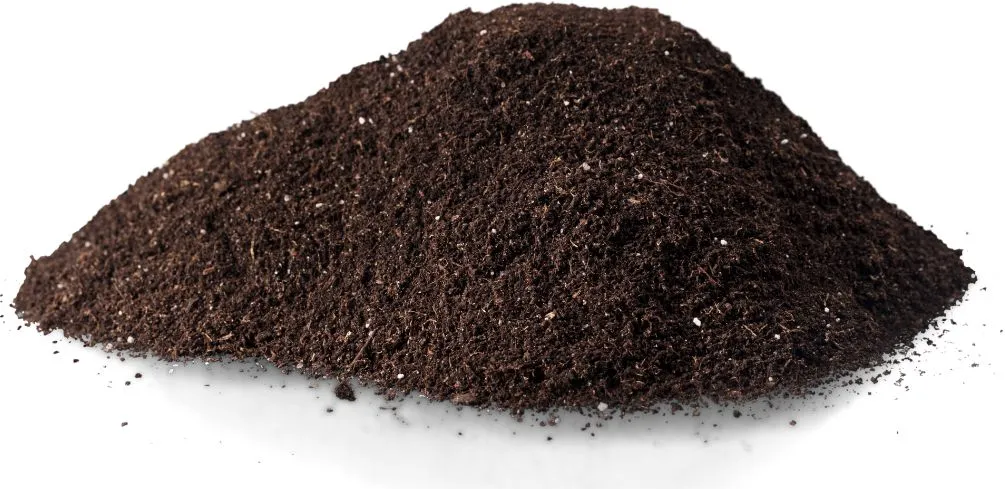Soil structure is a fundamental concept in soil science that affects the physical, chemical, and biological properties of soils. Soil structure refers to the arrangement of soil particles into aggregates or clumps that vary in size, shape, and strength.
The formation of soil structure depends on various factors such as soil type, moisture content, organic matter content, mineral composition, and biotic activity.
Understanding soil structure is crucial for farmers, gardeners, engineers, and environmentalists as it influences many aspects of plant growth, erosion control, water movement in soils, and nutrient cycling.
However, many people overlook the importance of soil structure and its impact on the environment. This article aims to provide an overview of soil structure basics by explaining the different types of soil structures and their properties.
By understanding these fundamentals of soil structure, readers will gain a deeper appreciation for the complexity and diversity of soils around them.
Factors Affecting Soil Structure
Soil structure is an essential component of soil quality that has far-reaching implications for plant growth, water infiltration, and nutrient cycling. Nonetheless, the factors that affect soil structure can be quite complex and varied.
One of the most prominent factors is soil texture, which refers to the size distribution of mineral particles in the soil. Soil texture influences pore size, shape and connectivity, thereby impacting water retention capacity, aeration, and nutrient availability.
Another critical factor affecting soil structure is soil compaction. This occurs when external forces compress the soil particles together, reducing pore space and limiting root growth. Compaction can result from various activities, such as heavy machinery traffic or excess tillage practices.
In addition to reducing crop yield potential, compacted soils are also susceptible to erosion and runoff. Therefore, understanding how these factors interact with one another to influence soil structure is crucial for improving land management practices and maintaining sustainable agriculture production systems.
Types Of Soil Structures
Soil structure composition can be classified into four types, which are granular, blocky, platy, and prismatic. Granular soil structure is characterized by a loose arrangement of soil particles that form small aggregates.
Blocky soil structure consists of larger aggregates that are irregularly shaped and have rounded or angular edges. Platy soil structure is formed when soil particles are arranged in thin horizontal layers or plates.
Lastly, prismatic soil structure has vertical columns or pillars that are wider at the top than at the base. The type of soil structure can affect water retention and availability to plants.
Soil with a granular structure typically holds more water because there are more spaces between the aggregates for water to occupy. On the other hand, soils with a blocky or platy structure may limit water availability due to their compact nature and lack of pore space.
In addition, prismatic soils may experience waterlogging as water cannot easily move through the vertical columns.
Understanding the type of soil structure present in a particular location can provide valuable information for optimizing irrigation practices and improving crop yields.
Overall, knowledge about the types of soil structures can help farmers make informed decisions on how to optimize crop production while minimizing environmental impacts such as erosion and nutrient runoff.
By paying attention to how different types of structures affect water retention and availability, farmers can develop strategies for maintaining healthy soils that support productive agriculture systems over time without negatively impacting natural resources.
Properties Of Soil Aggregates
As the saying goes, ‘a chain is only as strong as its weakest link.’ In a similar way, the properties of soil aggregates determine the overall strength and resilience of soil structure.
Soil aggregates are composed of particles that are held together by organic matter, minerals, and other substances. Understanding the properties of these aggregates is crucial for maintaining healthy soil.
One important property of soil aggregates is their ability to retain water. Aggregates with larger pore spaces can hold more water, while those with smaller pores retain less water. This has significant implications for plant growth, as adequate moisture levels are essential for healthy root development.
Another factor to consider is soil compaction, which occurs when the weight of heavy machinery or foot traffic compresses soil particles together. Compacted soils have fewer pore spaces, which reduces water retention and can make it difficult for plant roots to penetrate the soil.
By understanding these properties and taking steps to maintain healthy soil structures, farmers and gardeners can ensure that their crops thrive for years to come. To achieve optimal results in agriculture we must put into consideration our environment; we should not be too quick to disrupt nature’s balance but work alongside it instead.
The properties of soil aggregates play an essential role in maintaining a healthy ecosystem and promoting sustainable agriculture practices. Through proper management techniques such as cover cropping or reduced tillage methods, farmers can help preserve healthy aggregates that retain moisture and prevent compaction.
Ultimately, this benefits both the environment and the farmer by ensuring long-term productivity and preserving natural resources for future generations.
Importance Of Soil Structure For Plant Growth
Now that we have discussed the properties of soil aggregates let us delve deeper into the importance of soil structure for plant growth.
Soil structure refers to the way in which soil particles are arranged and held together. It plays a crucial role in determining how well plants can grow and thrive in a particular environment.
One of the key benefits of having good soil structure is improved water retention. When soil particles are well-arranged, they create spaces or pores that allow water to infiltrate and be stored within the soil. This means that plants have a consistent supply of water, even during dry periods.
Additionally, good soil structure promotes nutrient availability by providing an environment where nutrients can be easily accessed by plant roots. This is because pore spaces allow for air circulation and subsequent microbial activity, which breaks down organic matter and releases nutrients into the surrounding soil.
Therefore, maintaining a healthy soil structure is paramount to ensure optimal plant growth and yield.
Impacts Of Soil Structure On Environmental Processes
Did you know that the structure of soil plays a vital role in environmental processes?
Soil compaction, which occurs when soil particles are pressed together, can lead to decreased air and water flow in soil. This can have negative impacts on plant growth and nutrient cycling. Soil compaction can also increase the risk of erosion and runoff, leading to sedimentation in nearby bodies of water.
In addition to soil compaction, the structure of soil also plays a crucial role in nutrient cycling. The arrangement of soil particles affects the movement of nutrients through the soil profile. In well-structured soils with plenty of pore space, nutrients can move more easily between layers, allowing for efficient uptake by plants.
However, in poorly structured soils with limited pore space, nutrients become trapped and unavailable for plant uptake.
This can lead to deficiencies in essential nutrients, impacting plant growth and overall ecosystem health. Understanding the impacts of soil structure on environmental processes is crucial for managing healthy ecosystems. By minimizing soil compaction and promoting well-structured soils, we can support efficient nutrient cycling and promote healthy plant growth.
Frequently Asked Questions
Can Soil Structure Affect Water Quality And Availability?
Soil structure is a critical factor in determining the quality and availability of water for plants. The arrangement of soil particles affects the infiltration rate and retention capacity of the soil, which influences both water availability and quality.
Poor soil structure can lead to surface runoff and erosion, resulting in reduced water infiltration and increased sedimentation in streams and rivers. Soil compaction can also affect plant growth by reducing root penetration, aeration, and nutrient uptake.
Additionally, soil structure also plays an essential role in microbial activity, as it influences bacterial colonization and nutrient cycling processes within the soil. Therefore, understanding how soil structure affects water quality and availability is crucial for maintaining healthy ecosystems that support plant growth and microbial activity.
How Can Soil Compaction Affect Soil Structure?
Preventing soil compaction is crucial in maintaining healthy soil structure.
Soil compaction, caused by human activities such as heavy machinery use and foot traffic, can lead to reduced soil aeration and negatively affect the physical, chemical, and biological properties of the soil.
This can result in reduced water infiltration rates and increased surface runoff, which may lead to erosion and nutrient loss. In addition, compacted soils have a lower water-holding capacity, which can limit plant growth and reduce crop yields.
Therefore, it is important to implement practices such as reducing tillage operations and using cover crops that promote soil aeration and prevent soil compaction to ensure the long-term sustainability of our agricultural systems.
Is There A Relationship Between Soil Structure And Soil Erosion?
Soil erosion is a major problem in agriculture and land use planning due to its potential to cause significant environmental degradation. Soil structure plays an important role in mitigating soil erosion, as well-structured soils have a greater capacity to resist erosion than poorly structured-soils.
The relationship between soil structure and soil erosion is complex, with several factors influencing the stability of soil aggregates and their ability to withstand the erosive forces of wind and water.
Therefore, understanding the mechanisms behind soil structure formation and maintenance is crucial for developing effective strategies for managing soil erosion in agricultural and land use settings.
How Can Soil Amendments Improve Soil Structure?
Soil amendments, such as compost, can significantly improve soil structure by increasing the amount of organic matter in the soil. Organic matter plays a crucial role in maintaining the physical and chemical properties of soil, which are essential for plant growth and nutrient uptake.
Compost benefits the soil in several ways, including enhancing water-holding capacity, reducing erosion and compaction, improving nutrient availability, and promoting beneficial microbial activity.
The impact of organic matter on soil structure is undeniable, and incorporating compost into agricultural or landscaping practices can provide long-term benefits for both the environment and human health.
Does Soil Structure Vary Depending On The Geographic Location?
Soil structure is affected by various factors, including microbial influence and climate impact. The physical arrangement of soil particles influences pore spaces, which are essential for water movement, gas exchange, and nutrient availability.
Different geographic locations have varying soil structures due to differences in climatic conditions, such as temperature and precipitation patterns. For instance, arid regions typically have soils with low organic matter content and poor structure due to limited microbial activity. In contrast, humid regions have more diverse microbial communities that enhance soil aggregation and porosity.
Therefore, understanding the relationship between soil structure and environmental factors is crucial for sustainable agricultural practices and soil management strategies.
Conclusion
Soil structure is a fundamental aspect of soil health that affects water quality and availability. Compaction can significantly alter soil structure, leading to undesirable outcomes such as reduced crop yields and increased runoff.
Soil erosion is also closely related to soil structure, as soils with the poor structure are more susceptible to erosion.
Soil amendments can help improve soil structure by introducing organic matter and other beneficial nutrients into the soil. However, soil structure can vary depending on geographic location due to differences in climate, topography, and vegetation.
While it is generally accepted that healthy soil structure is essential for agricultural productivity and environmental sustainability, there is an ongoing debate about the best methods for improving soil structure.
Some researchers argue that conventional farming practices such as tillage and monoculture cropping can degrade soil health by disrupting natural processes that contribute to good soil structure. Others suggest that alternative practices such as conservation tillage and cover cropping may be more effective at promoting healthy soils.
Regardless of the specific methods used, it is clear that maintaining a healthy soil structure requires careful management of land resources. By understanding the complex relationships between soils, water, vegetation, and other environmental factors, we can work towards developing sustainable agricultural systems that promote both economic prosperity and ecological resilience.
With continued research and innovation in this field, we may someday unlock new insights into the workings of our planet’s most vital resource: the soil beneath our feet.











